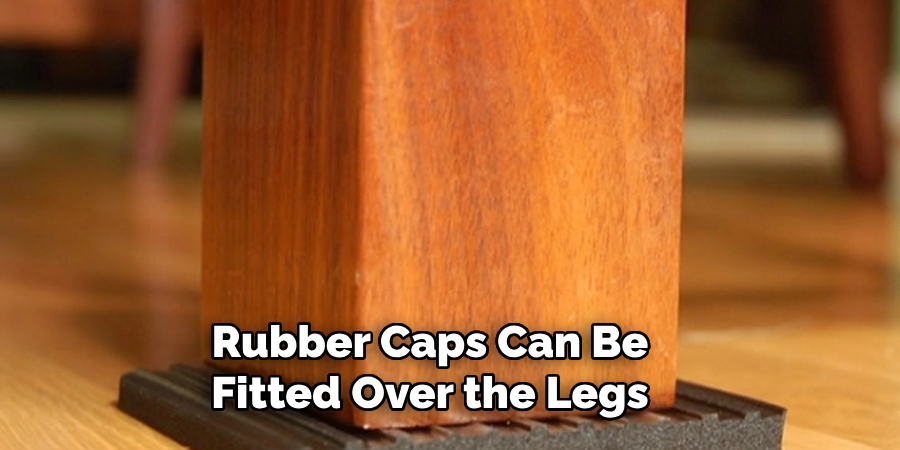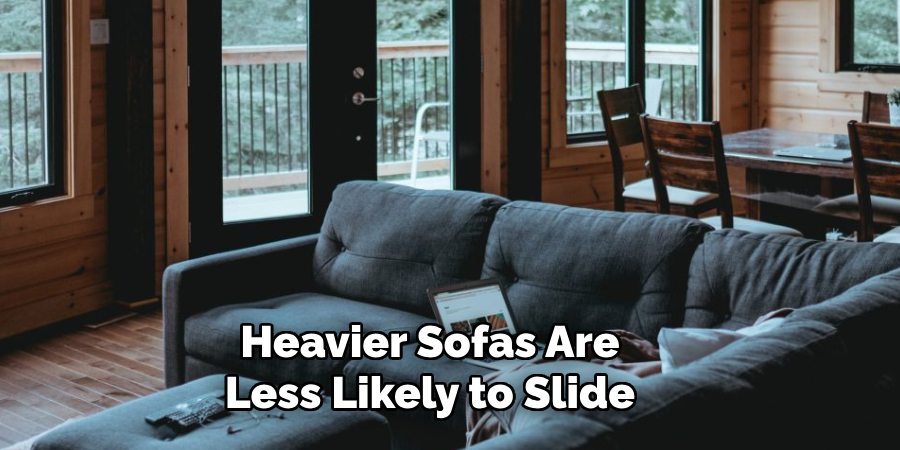A common issue with steel sofas is their tendency to shift and make contact with walls, potentially causing scratches, dents, or other damage to both the wall and the furniture. Preventing this can save you from unnecessary repairs and maintain the aesthetic appeal of your home. This guide will provide practical and easy solutions how to keep steel sofa from hitting wall, ensuring both your furniture and walls remain in pristine condition.

Why Preventing Sofa Wall Damage Matters
Preventing your steel sofa from damaging the wall is about more than just maintaining your home’s appearance; it also safeguards your furniture and walls from wear and tear. Scratches, scuffs, or dents on your walls can diminish the overall aesthetic of your living space, leading to costly repairs or repainting. Over time, repeated contact can also damage the sofa’s frame or finish, compromising its durability and decreasing its lifespan. Additionally, taking measures to prevent such damage promotes a harmonious and organized space, making your home more comfortable and visually appealing. By addressing this issue proactively, you can avoid long-term problems while keeping your living area in top condition.
Common Causes of Steel Sofas Hitting Walls
Understanding the common causes of steel sofas hitting walls can help in identifying the best solutions for prevention. One of the most frequent reasons is accidental shifting due to movement. Everyday activities like sitting, standing, or shifting positions on the sofa can cause it to slide, especially on smooth flooring such as tile or hardwood. Another common cause is improper placement of the sofa too close to the wall, leaving little to no room for adjustment or cushioning. Additionally, lack of protective measures like furniture pads or stoppers can contribute to the problem.
Tools and Materials Needed
To successfully prevent your steel sofa from hitting the wall, you’ll require a few tools and materials that are easily accessible. Below is a list of essentials:
- Furniture Pads or Felt Pads: These soft pads can be attached to the legs of the sofa to reduce movement and protect both the floor and the wall.
- Rubber or Silicone Furniture Stoppers: Designed to grip the floor, these stoppers prevent the sofa from sliding on smooth surfaces.
- Wall Protectors or Bumpers: Adhesive protectors can be mounted on the wall to absorb impact and prevent wall damage.
- Measuring Tape: Useful to ensure correct placement and maintain sufficient distance between the sofa and the wall.
- Rugs or Carpets: These add traction under the sofa, reducing slipping and shifting.
- Non-Slip Furniture Grippers: Specialized grippers that stick to the underside of furniture legs to enhance stability.
- Adjustable Furniture Straps (optional): For heavy-duty solutions, these straps can secure the sofa and prevent movement altogether.
10 Methods How to Keep Steel Sofa from Hitting Wall
1. Use Furniture Pads or Bumpers
Furniture pads or bumpers are one of the simplest and most effective solutions to prevent your steel sofa from hitting the wall. These pads are typically made from soft materials like felt, rubber, or foam and can be attached to the back or edges of the sofa. They act as a cushion, absorbing the impact and protecting both the wall and the furniture. Self-adhesive bumpers are easy to install and come in various sizes to suit different types of furniture.

2. Install Wall-Mounted Guards
Wall-mounted guards provide a physical barrier between the sofa and the wall. These guards are made from materials such as rubber, foam, or plastic and are attached directly to the wall at the points where the sofa is most likely to make contact. Choose guards that blend with your wall color or decor to maintain aesthetics. Wall-mounted guards are especially useful for households with active children or pets that may push the sofa against the wall frequently.
3. Adjust the Sofa’s Position
Repositioning your steel sofa is a straightforward yet effective solution. Leave a small gap of at least 2–4 inches between the sofa and the wall. This space ensures that even if the sofa shifts slightly during use, it won’t directly hit the wall. To maintain the gap, mark the floor or use visual guides to remind yourself of the correct placement during routine cleaning or rearrangements.
4. Anchor the Sofa with Furniture Stoppers
Furniture stoppers, also known as anti-slip pads, are placed under the legs of the sofa to prevent it from sliding. These pads are typically made from rubber or silicone and grip the floor firmly. By stabilizing the sofa, stoppers minimize movement and reduce the risk of it shifting toward the wall. They are particularly effective on smooth surfaces like tile, hardwood, or laminate floors where furniture is more likely to slide.
5. Attach Furniture Straps or Brackets
Furniture straps or brackets provide a secure way to anchor the sofa to the wall or floor. These devices are often used to prevent tipping but can also keep the sofa from moving backward. Attach one end of the strap to the back of the sofa and the other end to a stud in the wall or a fixed point on the floor. This method is ideal for homes in earthquake-prone areas where securing furniture is a safety priority.
6. Add Rubber Caps to Sofa Legs
Rubber caps can be fitted over the legs of your steel sofa to prevent sliding and protect your flooring. These caps add friction between the sofa and the floor, ensuring that the furniture stays in place even during use. Look for caps that fit snugly on the sofa legs to ensure they remain secure over time. This method is especially beneficial for steel sofas with metal legs that might otherwise scratch or slide on hard floors.

7. Install a Baseboard or Rail
Installing a baseboard or rail along the wall provides a permanent and aesthetic solution to protect the wall from furniture impacts. These features act as a barrier, keeping the sofa at a safe distance from the wall. Choose materials like wood, PVC, or metal that complement your interior design. Baseboards and rails are particularly useful for rooms where furniture is frequently moved, such as living rooms or family areas.
8. Use an Area Rug for Stability
An area rug can help stabilize your steel sofa by providing a non-slip surface. Place a rug under the sofa, ensuring that the legs rest firmly on it. For added stability, use a rug pad with anti-slip backing to prevent the rug itself from sliding. This solution not only keeps your sofa in place but also adds a decorative element to your room.
9. Create a Buffer with Decorative Items
Strategically placing decorative items between the sofa and the wall can create an effective buffer. For example, a slim console table, a row of large cushions, or even tall plants in sturdy pots can act as a barrier. These items not only prevent the sofa from hitting the wall but also enhance the aesthetic appeal of the room. Choose items that are stable and proportional to the size of the sofa to ensure practicality and style.
10. Secure with Velcro Strips or Adhesive Hooks
Velcro strips or adhesive hooks can be used to anchor lightweight steel sofas to the floor or nearby wall. Attach one side of the Velcro strip to the bottom of the sofa legs and the other side to the floor. Alternatively, use adhesive hooks to tether the sofa to the wall discreetly. This method works best for smaller steel sofas or those with minimal movement needs. Ensure that the adhesives are rated for the weight of the sofa and won’t damage your surfaces.

Things to Consider When Choosing a Solution
When selecting the best method to keep your steel sofa from hitting the wall, there are several factors to consider to ensure both effectiveness and practicality:
- Type of Flooring
The type of flooring in the room, such as hardwood, carpet, tile, or laminate, can influence how easily your sofa slides. Anti-slip solutions like furniture stoppers or rubber caps work best on smooth floors, while other options may be needed for carpeted areas.
- Frequency of Movement
If you frequently rearrange your furniture for cleaning or redecorating, choose solutions that are easy to adjust or remove, such as furniture pads, bumpers, or area rugs. Permanent fixtures like straps or baseboards might not be ideal in these cases.
- Weight and Size of the Sofa
Heavier sofas are less likely to slide but still benefit from additional stabilization methods. Lightweight sofas might require extra reinforcement, such as adhesive hooks or Velcro strips, to keep them securely in place.

Conclusion
Preventing your steel sofa from hitting the wall not only helps maintain the integrity of your walls but also ensures your living space remains aesthetically pleasing and organized. With a wide range of solutions available — from simple adjustments like repositioning the sofa or adding anti-slip pads, to more permanent options such as installing baseboards or using furniture straps — it’s easy to find a method that suits your needs and preferences. So, there you have it – a quick and easy guide on how to keep steel sofa from hitting wall.
Edmund Sumlin is a skilled author for Metal Fixes, bringing 6 years of expertise in crafting a wide range of metal fixtures. With a strong background in metalwork, Edmund’s knowledge spans various types of fixtures, from decorative pieces to functional hardware, blending precision with creativity. His passion for metalworking and design has made him a trusted resource in the industry.
Professional Focus:
- Expert in Metal Fixtures : Edmund aesthetic specializes in creating durable and innovative metal fixtures, offering both appeal and functionality. His work reflects a deep understanding of metalworking techniques and materials.
- Sustainability Advocate : He is dedicated to using sustainable practices, ensuring that every fixture is crafted with eco-friendly methods while maintaining high-quality standards.
In his writing for Metal Fixes, Edmund provides valuable insights into the latest trends, techniques, and practical advice for those passionate about metal fixtures, whether they are professionals or DIY enthusiasts. His focus on combining artistry with engineering helps others discover the true potential of metal in design.


